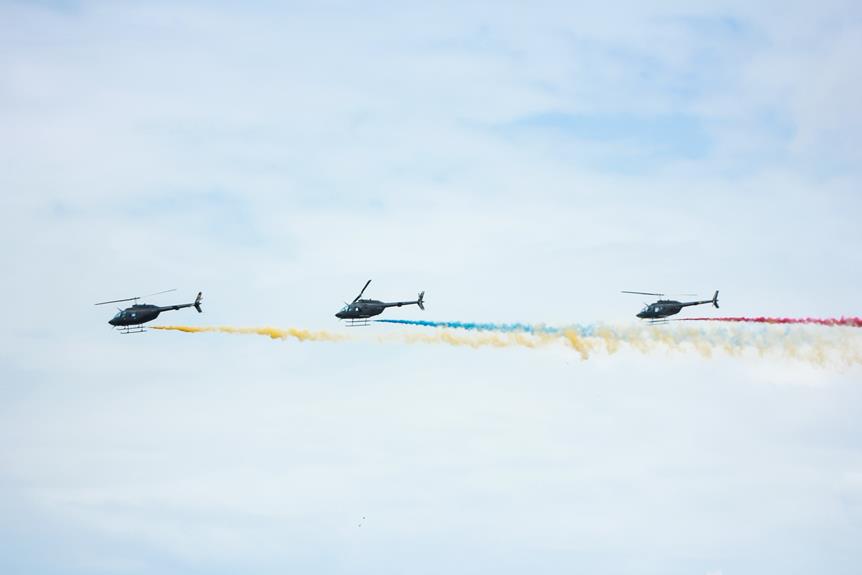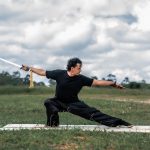In the realm of mixed martial arts (MMA), the integration of various martial arts styles has sparked debates regarding the legality and effectiveness of incorporating Wing Chun techniques.
This article delves into the question of whether Wing Chun is prohibited in MMA and assesses its efficacy in the context of professional fighting.
By examining its potential benefits and limitations, we aim to shed light on the role of this ancient Chinese martial art in the ever-evolving world of MMA.
Key Takeaways
- Wing Chun techniques such as throat-grabbing, eye pokes, and groin strikes are illegal in MMA.
- Many UFC fighters have adopted various Wing Chun techniques and movements, including Anderson Silva, Tony Ferguson, and Jon Jones.
- Wing Chun is effective in MMA/UFC when used to complement essential base martial arts, but it is not effective as a base martial art itself.
- Wing Chun techniques such as the oblique kick and hand trapping can be effective in MMA/UFC.
Legality of Wing Chun Techniques in MMA
The legality of Wing Chun techniques in MMA is determined by the Official Unified Rules of MMA. There has been controversy surrounding the legality of certain Wing Chun techniques in MMA due to their potential impact on fighter safety.
Techniques such as throat-grabbing, eye pokes, and groin strikes are considered dangerous and are therefore illegal in MMA. It is important to note that these techniques are not specific to Wing Chun and are prohibited regardless of the martial art being practiced.
The purpose of these rules is to ensure the safety of the fighters and to promote fair competition. By prohibiting such techniques, the governing bodies of MMA aim to minimize the risk of serious injury and create a level playing field for all competitors.
Adoption of Wing Chun Techniques by MMA Fighters
Prominent MMA fighters have embraced the incorporation of Wing Chun techniques into their fighting repertoire, showcasing the adaptability and efficacy of this martial art in the context of mixed martial arts. The adoption of Wing Chun techniques by these fighters has proven to enhance their striking abilities, allowing them to deliver powerful and accurate strikes.
Here are three ways in which Wing Chun techniques have been successfully utilized in MMA:
- Utilizing hand trapping: MMA fighters have been able to effectively trap their opponents' hands, creating openings for strikes and disrupting their opponents' balance. This technique has proven to be particularly useful in the clinch, where fighters can control their opponents and set up devastating strikes.
- Enhancing footwork and movement: Wing Chun's emphasis on quick footwork and agile movement has allowed MMA fighters to navigate different fighting scenarios with ease. This adaptability enables them to evade strikes, maintain distance, and create angles for effective counterattacks.
- Improving defensive capabilities: Wing Chun techniques have also been instrumental in enhancing fighters' defensive skills. The emphasis on blocking, parrying, and redirecting strikes has allowed fighters to effectively defend against their opponents' attacks, minimizing damage and creating opportunities for counterattacks.
The adoption of Wing Chun techniques by MMA fighters demonstrates their effectiveness in enhancing striking abilities and adaptability in different fighting scenarios. These fighters have successfully integrated Wing Chun into their skill set, showcasing the versatility and practicality of this martial art in the realm of mixed martial arts.
Tony Ferguson's Effective Use of Wing Chun Trapping Hands
While many MMA fighters have successfully incorporated Wing Chun techniques into their fighting style, one notable example is Tony Ferguson, who has demonstrated effective use of Wing Chun trapping hands in his fights.
Tony Ferguson has a unique approach to trapping hands in MMA, using it to control his opponents' strikes and create openings for his own attacks.
Trapping hands, a fundamental concept in Wing Chun, involves intercepting and redirecting an opponent's strikes while maintaining close contact.
Ferguson's proficiency in trapping hands allows him to dominate standing grappling exchanges, where he can neutralize his opponents' strikes and quickly transition into offensive maneuvers.
By utilizing Wing Chun hand fighting techniques, Ferguson is able to effectively control the clinch and gain an advantage in the fight.
His success with trapping hands exemplifies the effectiveness of Wing Chun hand fighting in standing grappling exchanges in the MMA arena.
Conor McGregor's Utilization of Wing Chun Hand Trapping
Conor McGregor effectively utilizes Wing Chun hand trapping techniques to control his opponents and create strategic openings in his fights. His mastery of hand trapping allows him to dominate the clinch and manipulate his opponent's movements.
Here are three key ways McGregor utilizes Wing Chun hand trapping in MMA:
- Control and redirection: McGregor uses quick hand traps to control his opponent's arms and redirect their strikes. By trapping their hands, he can nullify their attacks and create opportunities for counters.
- Disruption and unbalancing: McGregor's hand trapping skills enable him to disrupt his opponent's balance and stability. He leverages this advantage to off-balance them and create openings for strikes or takedowns.
- Distance management: McGregor effectively uses hand trapping to control the distance between himself and his opponent. By trapping their hands, he can limit their ability to close the distance and maintain a safe range for his striking.
The effectiveness of Wing Chun hand trapping in the clinch is evident in McGregor's fights, as he consistently demonstrates control, precision, and tactical awareness.
Jon Jones' Mastery of Wing Chun Hand Trapping and Oblique Kick
Despite controversy surrounding the legality of certain Wing Chun techniques in MMA, Jon Jones showcases his mastery of hand trapping and the oblique kick, demonstrating their effectiveness in controlling opponents and dictating the flow of his fights. Jones, known for his exceptional footwork and adaptability, seamlessly integrates Wing Chun principles into his fighting style. By utilizing hand trapping techniques, Jones effectively neutralizes his opponents' strikes while creating openings for his own attacks. Additionally, his implementation of the oblique kick allows him to control range and disrupt his opponents' balance. Jones' ability to seamlessly integrate Wing Chun into his ground fighting further solidifies his mastery of the art. His footwork techniques and utilization of Wing Chun principles have proven to be highly effective in the MMA arena, making him a formidable force in the octagon.
| Jon Jones' Mastery of Wing Chun Hand Trapping and Oblique Kick | ||
|---|---|---|
| Key Points | Analysis | Integration of Wing Chun into Ground Fighting |
| Jon Jones showcases mastery of hand trapping and the oblique kick | Demonstrates control over opponents and dictates fight flow | Utilizes Wing Chun principles in ground fighting |
| Footwork techniques and adaptability are key to Jones' success | Allows for seamless integration of Wing Chun techniques | Enhances ground fighting skills and adaptability |
| Hand trapping effectively neutralizes opponents' strikes | Creates openings for Jones' own attacks | Provides control and dominance in grappling exchanges |
| Oblique kick controls range and disrupts opponents' balance | Dictates distance and positioning in fights | Adds versatility and unpredictability to ground game |
| Jones' mastery of Wing Chun sets him apart in the MMA arena | Demonstrates effectiveness of Wing Chun in a competitive sport | Proves that Wing Chun can be successfully integrated into a well-rounded fighting style |
Wing Chun's Effectiveness as a Complementary Martial Art in MMA
When properly incorporated as a complement to essential base martial arts, Wing Chun can be effective in MMA. While it may not serve as a standalone base martial art due to its lack of competition and pressure testing, Wing Chun can have a significant impact on striking techniques in MMA.
Here are three ways in which Wing Chun can be effective in the context of MMA:
- Striking Techniques: Wing Chun's focus on close-range strikes, such as chain punches and palm strikes, can be effective in overwhelming opponents and creating openings for further attacks.
- Clinch Situations: Wing Chun's emphasis on hand fighting and trapping techniques can be valuable in the clinch. It allows practitioners to control their opponents' limbs, neutralize strikes, and create opportunities for takedowns or strikes.
- Grappling Situations: While Wing Chun does not incorporate grappling techniques, its principles of body positioning, sensitivity, and balance can aid practitioners in defending against grappling-based martial arts. By maintaining a strong base and utilizing effective footwork, Wing Chun practitioners can avoid being taken down or controlled on the ground.
When used strategically and in conjunction with other martial arts, Wing Chun can enhance an MMA fighter's overall skill set and provide valuable tools for both striking and clinch situations.
Limitations of Wing Chun as a Base Martial Art in MMA
However, Wing Chun's effectiveness as a base martial art in MMA is limited due to several factors.
While Wing Chun techniques such as the oblique kick and hand trapping can be effective in specific situations, they do not provide a comprehensive skill set for the diverse range of techniques and strategies needed in MMA.
One limitation is the lack of grappling training in Wing Chun, which leaves practitioners vulnerable to opponents who possess strong grappling skills.
Additionally, the focus on self-defense in Wing Chun does not align with the aggressive nature of sport-based martial arts like MMA.
Furthermore, the absence of competition and pressure testing through sparring in traditional Wing Chun training hinders the development of effective techniques and strategies.
To overcome these limitations, individuals interested in incorporating Wing Chun into a well-rounded MMA skill set should seek training in other martial arts, such as Brazilian Jiu-Jitsu and wrestling, to enhance their ground fighting abilities and adaptability in different scenarios.
Training in a reputable MMA gym that provides guidance and experience in integrating Wing Chun can also be beneficial.
The Role of Wing Chun Techniques in MMA: Oblique Kick and Hand Trapping
Wing Chun techniques such as the oblique kick and hand trapping play a crucial role in enhancing the effectiveness of fighters in MMA. These techniques provide fighters with strategic advantages and tactical options to control distance, create openings, and unbalance opponents.
Here is a closer look at how these techniques contribute to the success of fighters in the MMA arena:
- Effectiveness of the oblique kick in MMA:
- The oblique kick aims to hyperextend an attacker's kneecap, causing significant pain and potentially debilitating them.
- This kick is highly effective in keeping opponents at bay and preventing them from closing the distance.
- It can also be used to target specific areas, such as the thigh or calf, to weaken an opponent's leg and limit their mobility.
- The versatility of hand trapping in MMA:
- Hand trapping techniques in Wing Chun allow fighters to control their opponent's arms and hands, limiting their striking options.
- By trapping an opponent's hand, fighters can block strikes, create openings for counters, and disrupt their opponent's balance.
- Hand trapping is also useful in clinch entries, dominating the clinch, and controlling the pace of the fight.
Conclusion
In conclusion, while Wing Chun techniques such as throat-grabbing and eye pokes are illegal in MMA, the incorporation of certain aspects of Wing Chun, such as hand trapping and the oblique kick, has proven to be effective for some fighters.
However, the limitations of Wing Chun as a base martial art in MMA, including its lack of grappling elements and limited pressure testing, highlight the need for practitioners to integrate it with other martial arts to be fully effective in the competitive arena.
- 15 Best Martial Arts Weapons (Fighting & Training) - October 14, 2024
- Is Fencing a Martial Art? (Yes, 4 Reasons Why) - October 14, 2024
- 7 Best Martial Arts for Self-defense Ranked (Highly Effective) - October 14, 2024










